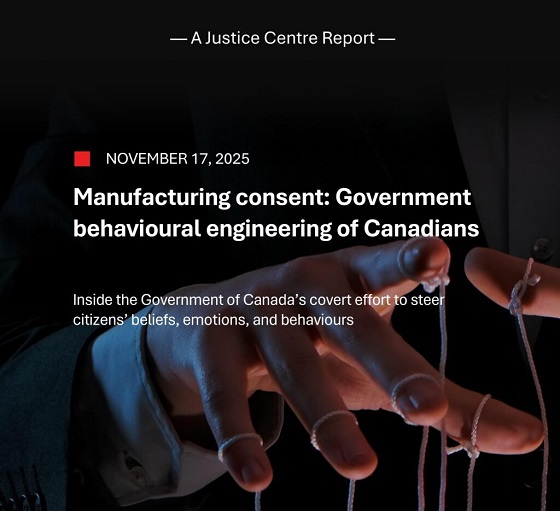Economy
The case against Net Zero 2050

Fossil fuels expert Alex Epstein shares everything you need to know about fossil fuels and what the world would really look like if we were “net zero” by 2050.
—
Alex Epstein is a philosopher and energy expert who argues that “human flourishing” should be the guiding principle of industrial and environmental progress. He is the author of the New York Times bestseller, “The Moral Case for Fossil Fuels,” and his latest book, “Fossil Future.”
For months I have been eagerly anticipating a scheduled debate I had at the University of Syracuse on “net zero by 2050” with climate catastrophist and net-zero advocate Tom Rand.
Unfortunately, due apparently to some sort of weird contractual issue between Tom’s agent and the university, Tom did not make it to the debate.
Since I was supposed to be in a debate, but there was no one to debate, I thought the best I could make of the situation would be to give a speech refuting every single argument for “net zero by 2050” that Tom and others make. It ended up being one of my favorite speeches ever; you can watch it here. We’ve also embedded the video below.
Below I have included all the “net zero” myths I covered , and then some. I think you’ll find them, along with the positive points about energy freedom, very valuable.
Myth: The best policy toward CO2 emissions is “net zero by 2050.”
Truth: Net-zero policies have been catastrophically destructive when barely implemented and would be apocalyptically destructive if fully implemented.
They should be abandoned in favor of energy freedom policies.
How to think about the right policy toward fossil fuels and their CO2 emissions
- What are “net zero by 2050 policies”?Government (coercive) actions whose primary and binding goal is the net-elimination of CO2 (and other GHG) emissions, whose number one source is fossil fuel use, by 2050.
In practice “net zero” means: rapidly eliminate most fossil fuel use.
- One “net zero” policy is an extremely high “carbon tax,” like “$1000/ton.”This would mean, in practice:
- 3-4 times higher prices for gasoline in Texas
- 9 times higher electricity prices in West Virginia
- 4-5 times higher prices for heating with natural gas
- What are “energy freedom policies”?Government actions to protect the ability of producers to produce all forms of energy and consumers to use all forms of energy, so long as they don’t engage in reasonably preventable pollution or endangerment of others.
- Energy freedom policies include:
- Protecting the freedom to develop fossil fuels and other forms of energy. E.g., deep geothermal development.
- Protecting the freedom to use fossil fuels and all other forms of energy. E.g., “decriminalizing nuclear.”
- Interesting: the 2 biggest instances of CO2 reduction have come from energy freedom policies:
- Nuclear: Freedom led to cost-effective and scalable nuclear power until the “green” movement virtually criminalized it.
- Gas: Freedom led to significant substitution of gas vs. coal.
- Myth: Net-zero policies are new and exciting.
Truth: Net-zero policies have caused catastrophic energy shortages even with minuscule implementation. Just by slowing the growth of fossil fuel use, not even reducing it, they have caused global energy shortages advocates didn’t warn us of. - Minuscule net-zero policies causing huge problems:
- US: Frequent power shortages (and some disastrous blackouts) after shutting down fossil fuel power plants. E.g., CA
- EU: Deadly fossil fuel dependence after restricting domestic fossil fuel industry
- Poor nations: Can’t afford fuel due to global restrictions1

- The root problem with “net zero by 2050”It violates a basic principle of rational thinking, which is that when evaluating what to do about a product or technology—e.g., prescription drug—you need to carefully weigh the benefits and side-effects of your alternatives.
- Myth: If there are negative climate side-effects of continuing fossil fuel use we should get them to net-zero as soon as possible.Truth: We should carefully weigh them against the benefits that come with them, including positive climate side-effects, climate mastery abilities, and many broader benefits.
- It is particularly crucial to weigh any negative climate side-effects of continuing fossil fuel use against the climate mastery benefits that come with them, as those benefits can neutralize or overwhelm negatives.E.g., more energy powering heating and cooling, irrigation, infrastructure-building, etc.
- Example of fossil-fueled climate mastery overwhelming negative impacts: Drought.Any contribution of rising CO2 to drought has been overwhelmed by fossil-fueled irrigation and crop transport, which have helped reduce drought deaths by over 100 times over 100 years as CO2 levels have risen.2

- An irrefutable method for thinking about policy toward fossil fuels and their CO2 emissions1 Factor in broad benefits
2 Factor in climate mastery benefits
3 Factor in positive and negative climate side-effects (from rising CO2)No net-zero advocate has refuted it, yet none follow it.
- How net-zero advocates fail to weigh benefits and side-effects of fossil fuels
- Factor in broad benefits – Deny or trivialize
- Factor in climate mastery benefits – Deny
- Factor in positive and negative climate side-effects – Deny or trivialize positives, Catastrophize negatives = Overstate, Deny mastery
- If we follow the irrefutable principles of weighing benefits and climate side-effects of continuing fossil fuel use, using undeniable facts and mainstream science, it is obvious that “net zero by 2050” would be apocalyptically destructive and that the right path forward is energy freedom.
Applying fossil fuel policy principle 1: Factoring in the broad benefits of continuing fossil fuel use
- Myth: The benefit of continuing fossil fuel use is trivial at best.Truth: The benefit of continuing fossil fuel use is a world in which 8 billion people have the energy they need to survive and flourish—vs. an energy-starved world in which most of the world’s 8 billion people suffer from poverty and premature death.
- Myth: There are no real benefits of continuing fossil fuel use because it can be rapidly replaced by mostly solar and wind.Truth: fossil fuels are and for decades will remain uniquely cost-effective: affordable, reliable, versatile—on a scale of billions of people in thousands of places.
- Myth: Fossil fuels are being rapidly replaced in an “energy transition” to solar and wind.Truth: Fossil fuel use is 80% of the world’s energy and still growing despite 100+ years of aggressive competition and 20+ years of political hostility and massive solar and wind favoritism.3

- Myth: Fossil fuel use will soon rapidly decline because countries know “green” energy will be cheaper.Truth: Countries that care most about cheap energy are pro-fossil fuels.
E.g., China, which uses mostly coal to produce “green” tech, has over 300 planned new coal plants designed to last over 40 years.
- Myth: Solar and wind are growing fast by outcompeting fossil fuels with superior economics.Truth: Solar and wind are growing fast only when given massive government preferences—mandates, subsidies, and no penalty for unreliability—along with crippling government punishments of fossil fuels.
- Myth: Solar and wind are now cheaper than fossil fuels.Truth: For the overwhelming majority of the world’s energy needs, solar and wind either can’t do what fossil fuel can—e.g., non-electricity energy uses such as airplanes or cargo ships—or are far more expensive.
- Myth: Solar and wind electricity is getting so cheap that will lead to rapid electrification of the 4/5ths of today’s energy that is not electricity.Truth: When you factor in the full cost of the 24/7 life support that unreliable solar and wind electricity need, they are far more expensive.4

- Myth: Solar and wind plus batteries will inevitably be super-cheap because of efficiency increases driving lower production costs and higher performance.Truth: Their cost is astronomical today and has a large mining component whose costs will increase if scaled artificially quickly.5

- Even relatively mild increases in demand for critical minerals in recent years have led to scaling issues and cost increases—reversing a trend of falling prices that solar and wind advocates pretended would last forever.What will rapid scaling plus anti-mining policies do?6

- Myth: Rapidly eliminating fossil fuels will make us more energy-secure.Truth: We’d be far less energy secure because 1) we’d have drastically less energy, period, and 2) we’re far more dependent on China for key components of solar, wind, and batteries than we are on Russia for fossil fuels.7

- Myth: Reliable alternatives to fossil fuels, such as nuclear and geothermal, can rapidly replace fossil fuels.Truth: While these industries have potential that we should unleash, they are generations away from providing, on a global scale, energy that’s affordable, reliable, and versatile.8

- Myth: Academics have rigorous plans to replace fossil fuels with mostly solar and wind
Truth: All these “plans” involve 2 absurdities: 1. Unprecedented mining and construction in today’s anti-development political environment will be cheap.
2. Untested schemes will be cheap, everywhere, the first time. - “Net zero” plans to scale solar and wind involve more than doubling the supply of half a dozen major mined materials per decade.I know of no example, ever, of any major mined mineral doubling that fast, even with pro-development governments—let alone today’s anti-development governments.9

- All “net zero” by 2050 plans involve totally untested schemes, both for
- Electricity: Solar and wind somehow being the basis of cheap, reliable electricity.
- Other energy: Myriad electric or hydrogen vehicles (e.g., planes, ships) that are nowhere near commercial reality.10

- Myth: Carbon capture will soon allow us to have global cost-effective energy without CO2 emissions.Truth: While cost-effective carbon capture is worth exploring (e.g., using CO2 for industry or agriculture), there’s no evidence that most emissions can be captured cheaply.

- Summary: Fossil fuels are, and for decades will remain, uniquely cost-effective: affordable, reliable, versatile—on a scale of billions of people in thousands of places.
Policy implications:- Energy freedom —> global cost-effective energy
- Net zero —> very little cost-effective energy
- When “net zero by 2050” advocates are forced to concede that their policies would (at minimum) dramatically reduce the availability of energy, they revert to the myth that cost-effective energy is only of modest importance compared to CO2 emissions reductions.
- Myth: Cost-effective energy isn’t nearly as important as CO2 reductions, which affect Earth’s livability.Truth: The cost-effectiveness of energy determines Earth’s livability because it allows us to use machines turn a naturally inhospitable planet into an abundant and safe place.11

- Myth: The Earth will be a highly livable place—stable, sufficient in resources, and safe—as long as we don’t impact it too much.Truth: Earth is very inhospitable—dynamic, deficient, dangerous—unless we have the productive ability to transform and impact it to be abundant and safe.
- Myth: Energy is just one of many factors affecting to what extent we can flourish on this naturally inhospitable planet.Truth: The cost-effectiveness of energy is fundamental to human flourishing because it determines our ability to use machines to become super-productive.
- Myth: Fossil Fuels aren’t the reason the Earth is so livable now—it’s much more medical care, sanitation, scientific progress, and technological progress.Truth: Cost-effective fossil fuels underlie them all: freeing up time for them, powering their machines, and providing raw materials.12

- Myth: The benefits we’ve gotten from uniquely cost-effective fossil fuel energy are modest at best compared to their downsides.Thanks to our fossil-fueled productivity, longevity and income have been skyrocketing, with extreme poverty (<$2/day) plummeting from 42% in 1980 to less than 10% today.13

- Myth: Rapidly eliminating uniquely cost-effective fossil fuel energy won’t be that bad because we can save a lot energy via efficiency.Truth: Not only could people in the wealthy world benefit from more energy, the vast majority of the world needs much more energy to get out of poverty.
- The desperate need for far more of the global-scale cost-effective energy that only fossil fuels can provide near-term:
- 1/3 of the world uses wood and animal dung for heating and cooking.
- 3 billion use less electricity than a typical American refrigerator.14

- Myth: Poor countries will “leapfrog” fossil fuels and go right to solar and wind.Truth: No rich country has been able to abandon fossil fuels even at huge cost, while every dramatic increase in wealth has involved fossil fuels: Japan, Singapore, South Korea, China, etc.
Poor countries are not guinea pigs.
- Any invocation of “efficiency” to pretend that the world doesn’t need far more energy amounts to cruel indifference to the enormous energy needs of the world’s poorest people.
- Summary: Fossil fuels are a near-term irreplaceable source of the cost-effective energy humans need to flourish.Policy implications
- Energy freedom —> Billions more will have the opportunity to flourish.
- Net zero —> Billions of energy-starved people plunge into poverty and early death.
Applying fossil fuel policy principle 2: Factoring in the climate mastery benefits of continuing fossil fuel use
- Myth: Our weak “adaptation” abilities are already overwhelmed by climate changes.Truth: Our fossil-fueled climate mastery abilities have completely overwhelmed any negative changes plus huge natural danger—meaning we can overcome almost any conceivable future climate challenge.
- Myth: We are more endangered than ever by climate because of fossil fuels’ CO2 emissions.Truth: We have a 98% decline in climate disaster deaths due to our enormous fossil-fueled climate mastery abilities: heating/cooling, infrastructure-building, irrigation, crop transport.15

- Myth: Climate-related disaster X shows that fossil fuels are making climate unlivable.Truth: If we look at trends, not anecdotes, the drastic decline in extreme weather deaths shows that fossil fuels have made our naturally dangerous climate more livable than ever.16

- Myth: The decline in climate disaster deaths is due to storm warning systems, not fossil fuels.Truth:
- Fossil fuels power storm warning and evacuation systems.
- Drought, not storm, deaths are the leading source of climate death reduced.17

- Myth: Even if climate-related disaster deaths are down, climate-related damages are way up, pointing to a bankrupting climate future.Truth: Even though there are many incentives for climate damages to go up—preferences for riskier areas, government bailouts—GDP-adjusted damages are flat.18

- Myth: Adaptation to future climate changes is expensive, while “mitigation”—avoiding CO2 emissions—is relatively cheap.Truth: We’ve seen that using fossil fuels we can be ever-wealthier and safer from climate, vs. even minor “mitigation” has caused deadly energy shortages and poverty.19

- Myth: Even if we’re safe from climate now, we can expect future emissions to lead to disaster.Truth: Since today’s unprecedented safety exists after 100+ years of rising CO2, and with 1° C warming, we should be skeptical that further CO2 rises will somehow overwhelm us.
- Summary: A crucial benefit of uniquely cost-effective fossil fuel energy is enormous climate mastery abilities.Policy implications
- Energy freedom —> We’ll get ever-better at mastering climate danger, natural or manmade.
- Net zero —> Climate danger will dramatically increase.
Applying fossil fuel policy principle 3: Factoring in the positive and negative climate impacts of continuing fossil fuel use (with precision)
- Myth: Mainstream science shows that rising CO2 is an “existential threat” that will soon cause global catastrophe and then apocalypse.Truth: Mainstream science shows that rising CO2 levels will lead to levels of warming and other changes that we can master and flourish with.
- Myth: Media “expert” claims of future climate disaster are likely to be credible.Truth: Such claims are only credible if the expert factors in climate mastery (which almost none do) and does not engage in the popular practice of distorting climate science for effect.20


- Myth: If mainstream science concludes that we will experience more warming, storm intensity, or sea level rises, that means catastrophe or worse.Truth: Given climate mastery, catastrophe could only occur with changes that are a total difference in kind from rising CO2 so far.
- Climate mastery is so powerful that for CO2 emissions to be apocalyptic enough to justify rapid fossil fuel restriction, let alone elimination, they’d need to have unprecedented impacts, such as
- Seas rising feet per decade
- 2X more powerful storms
Science shows nothing like this.
- Myth: Future warming is ominous because heat-related death is already such a catastrophic problem.Truth: Even though Earth has gotten 1°C warmer, far more people still die from cold than heat (even in India)! Near-term warming is expected to decrease temperature-related mortality.21

- Myth: Future warming is ominous because it will be worst in hot areas.Truth: The mainstream view in climate science is that more warming will be concentrated in colder places (Northern latitudes) and at colder times (nighttime) and during colder seasons (winter). Good news.22

- Myth: Future warming will accelerate as CO2 levels rise.Truth: Mainstream science is unanimous that the “greenhouse effect” is a diminishing effect, with additional CO2 leading to less warning.
Even IPCC’s most extreme, far-fetched scenarios show warming leveling off.23
- Myth: Climate science says Earth will be a scorching desert, like “Mad Max.”There is no Mad Max scenario, even considering emissions and warming higher than we can expect. Agricultural productivity is estimated to increase massively under a 4-5°C warming scenario.24


- Myth: Even if we won’t be overwhelmed by warming driven by rising CO2, we’ll be overwhelmed by other climate changes, such as sea level rises and storms.Truth: Even the IPCC, with many catastrophist tendencies, projects climate changes that would be masterable with fossil fuels.
- Myth: We face catastrophically rapid sea level rises, which will destroy and submerge coastal cities.Truth: Extreme UN sea level rise projections are just 3 feet in 100 years. Future generations can master that. (We already have 100M people living below high-tide sea level.)25

- Myth: Hurricane intensity is expected to get catastrophically higher as temperatures rise.Truth: Mainstream estimates say hurricanes will be less frequent and between 1-10% more intense at 2° C warming. This is not at all catastrophic if we continue our fossil-fueled climate mastery.26

- Myth: We face catastrophic increases in dangerous wildfires, an “Earth on fire.”While the media increasingly reports on fires and draws connections to warming, the world burns less than 20 years ago and far less than 100 years ago. Fire danger primarily depends on human mastery.27
- Myth: Science says that if we hit 2° C warming, let alone beyond, since the 1800s, we face catastrophe followed by apocalypse.Truth: The 2° C number is activist fiction. The climate mastery abilities that have made life far better through 1° C warming so far will continue to keep us safe.
- Summary: Continuing fossil fuel use will lead to levels of warming and other changes that we can master and flourish with.Policy implications
- Energy freedom —> CO2 levels rise, life continues to get better and better
- Net zero —> CO2 levels rise more slowly, billions of lives ruined
- Energy freedom policies are more likely to lead to long-term emissions reductions.
Because they accelerate the rate at which nuclear and other alternatives become globally cost-competitive.(The only moral and practical way to reduce global emissions.)28
- Net zero by 2050, by failing to recognize the unique benefits of fossil fuels, is catastrophic when barely implemented and would be apocalyptic if fully implemented.Energy freedom gives billions more people the energy they need to flourish and unleashes truly cost-effective alternatives.
QED
References
- Reuters – ANALYSIS-Fuel crisis cuts electricity in Bangladesh, sparking energy debate↩
- UC San Diego – The Keeling CurveFor every million people on earth, annual deaths from climate-related causes (extreme temperature, drought, flood, storms, wildfires) declined 98%–from an average of 247 per year during the 1920s to 2.5 per year during the 2010s.
Data on disaster deaths come from EM-DAT, CRED / UCLouvain, Brussels, Belgium – www.emdat.be (D. Guha-Sapir).
Population estimates for the 1920s from the Maddison Database 2010, the Groningen Growth and Development Centre, Faculty of Economics and Business at University of Groningen. For years not shown, population is assumed to have grown at a steady rate.
Population estimates for the 2010s come from World Bank Data.
- Energy Institute – Statistical Review of World Energy↩
- U.S. Energy Information Administration – Hourly Electric Grid Monitor↩
- Global primary energy consumption in 2022 was 604.04 EJ or about 460 TWh (= 460,000,000 MWh) per day.
According to Tesla Megapacks cost about $413,000 per MWh. Tesla – Order MegapackEnergy Institute – Statistical Review of World Energy - Energy Monitor – Data shows how the cost of energy transition minerals has soared since 2020↩
- Financial Times – How China is winning the race for Africa’s lithium↩
- Energy Institute – Statistical Review of World Energy↩
- IEA – The Role of Critical Minerals in Clean Energy Transitions“Meeting such unprecedented mineral demands will require opening far more mines than now exist, and far faster than at any time in history. (The global average time from the qualification of a property to bringing a new mine into operation is 16 years.)”
Mark Mills – The “Energy Transition” Delusion A Reality Reset - Clack et al. (2017) – Evaluation of a proposal for reliable low-cost grid power with 100% wind, water, and solar↩
- USA Today News – ‘The world is going to end in 12 years if we don’t address climate change,’ Ocasio-Cortez says↩
- Maddison Database 2010 at the Groningen Growth and Development Centre, Faculty of Economics and Business at University of GroningenWorld Bank Data
- World Bank Data↩
- IEA – Access to affordable, reliable, sustainable and modern energy for allRobert Bryce – A Question of Power: Electricity and the Wealth of Nations
- UC San Diego – The Keeling CurveFor every million people on earth, annual deaths from climate-related causes (extreme temperature, drought, flood, storms, wildfires) declined 98%–from an average of 247 per year during the 1920s to 2.5 in per year during the 2010s.
Data on disaster deaths come from EM-DAT, CRED / UCLouvain, Brussels, Belgium – www.emdat.be (D. Guha-Sapir).
Population estimates for the 1920s from the Maddison Database 2010, the Groningen Growth and Development Centre, Faculty of Economics and Business at University of Groningen. For years not shown, population is assumed to have grown at a steady rate.
Population estimates for the 2010s come from World Bank Data.
- Data on disaster deaths come from EM-DAT, CRED / UCLouvain, Brussels, Belgium – www.emdat.be (D. Guha-Sapir).Population estimates come from World Bank Data.
- UC San Diego – The Keeling CurveFor every million people on earth, annual deaths from climate-related causes (extreme temperature, drought, flood, storms, wildfires) declined 98%–from an average of 247 per year during the 1920s to 2.5 in per year during the 2010s.
Data on disaster deaths come from EM-DAT, CRED / UCLouvain, Brussels, Belgium – www.emdat.be (D. Guha-Sapir).
Population estimates for the 1920s from the Maddison Database 2010, the Groningen Growth and Development Centre, Faculty of Economics and Business at University of Groningen. For years not shown, population is assumed to have grown at a steady rate.
Population estimates for the 2010s come from World Bank Data.
- Roger Pielke Jr. – Weather and Climate Disaster Losses So Far in 2022, Still Not Getting Worse↩
- The Economist – Expensive energy may have killed more Europeans than covid-19 last winter↩
- New York Time – Ian Moves NorthRyan Maue – Global Tropical Cyclone Activity
- Zhao et al. (2021)Bjorn Lomborg – Climate Change Saves More Lives Than You’d Think
- NOAA – Climate change rule of thumb: cold “things” warming faster than warm things↩
- IPCC AR6, WG1, chapter 4↩
- Our World in Data – Data Explorer: IPCC ScenariosPatrick Brown – The IPCC Report on the Impacts of Climate Change is Depressing; But not for the reasons you might think
- IPCC AR6, WG1↩
- NOAA – Global Warming and Hurricanes↩
- Roger Pielke Jr. – What the media won’t tell you about … Wildfires↩
- Reuters – Analysis: China no closer to peak coal despite record renewable capacity additionsReuters – India rejects net zero carbon emissions target, says pathway more important
Alex Epstein – A pro-human, pro-freedom policy for CO2 emissions
Carbon Tax
Carney fails to undo Trudeau’s devastating energy policies

From the Fraser Institute
By Tegan Hill and Elmira Aliakbari
On the campaign trail and after he became prime minister, Mark Carney has repeatedly promised to make Canada an “energy superpower.” But, as evidenced by its first budget, the Carney government has simply reaffirmed the failed plans of the past decade and embraced the damaging energy policies of the Trudeau government.
First, consider the Trudeau government’s policy legacy. There’s Bill C-69 (the “no pipelines act”), the new electricity regulations (which aim to phase out natural gas as a power source starting this year), Bill C-48 (which bans large oil tankers off British Columbia’s northern coast and limit Canadian exports to international markets), the cap on emissions only from the oil and gas sector (even though greenhouse gas emissions have the same effect on the environment regardless of the source), stricter regulations for methane emissions (again, impacting the oil and gas sector), and numerous “net-zero” policies.
According to a recent analysis, fully implementing these measures under Trudeau government’s emissions reduction plan would result in 164,000 job losses and shrink Canada’s economic output by 6.2 per cent by the end of the decade compared to a scenario where we don’t have these policies in effect. For Canadian workers, this will mean losing $6,700 (annually, on average) by 2030.
Unfortunately, the Carney government’s budget offers no retreat from these damaging policies. While Carney scrapped the consumer carbon tax, he plans to “strengthen” the carbon tax on industrial emitters and the cost will be passed along to everyday Canadians—so the carbon tax will still cost you, it just won’t be visible.
There’s also been a lot of buzz over the possible removal of the oil and gas emissions cap. But to be clear, the budget reads: “Effective carbon markets, enhanced oil and gas methane regulations, and the deployment at scale of technologies such as carbon capture and storage would create the circumstances whereby the oil and gas emissions cap would no longer be required as it would have marginal value in reducing emissions.” Put simply, the cap remains in place, and based on the budget, the government has no real plans to remove it.
Again, the cap singles out one source (the oil and gas sector) of carbon emissions, even when reducing emissions in other sectors may come at a lower cost. For example, suppose it costs $100 to reduce a tonne of emissions from the oil and gas sector, but in another sector, it costs only $25 a tonne. Why force emissions reductions in a single sector that may come at a higher cost? An emission is an emission regardless of were it comes from. Moreover, like all these policies, the cap will likely shrink the Canadian economy. According to a 2024 Deloitte study, from 2030 to 2040, the cap will shrink the Canadian economy (measured by inflation-adjusted GDP) by $280 billion, and result in lower wages, job losses and a decline in tax revenue.
At the same time, the Carney government plans to continue to throw money at a range of “green” spending and tax initiatives. But since 2014, the combined spending and forgone revenue (due to tax credits, etc.) by Ottawa and provincial governments in Ontario, Quebec, British Columbia and Alberta totals at least $158 billion to promote the so-called “green economy.” Yet despite this massive spending, the green sector’s contribution to Canada’s economy has barely changed, from 3.1 per cent of Canada’s economic output in 2014 to 3.6 per cent in 2023.
In his first budget, Prime Minister Carney largely stuck to the Trudeau government playbook on energy and climate policy. Ottawa will continue to funnel taxpayer dollars to the “green economy” while restricting the oil and gas sector and hamstringing Canada’s economic potential. So much for becoming an energy superpower.
Business
The UN Pushing Carbon Taxes, Punishing Prosperity, And Promoting Poverty


From the Daily Caller News Foundation
Unelected regulators and bureaucrats from the United Nations have pushed for crushing the global economy in the name of saving the planet.
In October, the International Maritime Organization (IMO), a specialized agency within the U.N., proposed a carbon tax in order to slash the emissions of shipping vessels. This comes after the IMO’s April 2025 decision to adopt net-zero standards for global shipping.
Had the IMO agreed to the regulation, it would have been the first global tax on greenhouse gas emissions. Thankfully, the United States was able to effectively shut down those proposals; however, while these regulations have been temporarily halted, the erroneous ideas behind them continue to grow in support.
Proponents of carbon taxes generally argue that since climate change is an existential threat to human existence, drastic measures must be taken in all aspects of our lives to address the projected costs. People should eat less meat and use public transportation more often. In the political arena, they should vote out so-called “climate deniers.” In the economic sphere, carbon taxes are offered as a technocratic quick fix to carbon emissions. Is any of this worth it? Or are the benefits greater than the costs? In the case of climate change, the answer is no.
Carbon taxes are not a matter of scientific fact. As with all models, the assumptions drive the analysis. In the case of carbon taxes, the time horizon selected plays a major role in the outcome. So, too, does the discount rate and the specific integrated assessment models.
In other words, “Two economists can give vastly different estimates of the social cost of carbon, even if they agree on the objective facts underlying the analysis.” If the assumptions are subjective, as they are in carbon taxes, then they are not scientific facts. As I’ve pointed out, “carbon pricing models are as much political constructs as they are economic tools.” One must also ask whether carbon taxes will remain unchanged or gradually increase over time to advance other political agendas. In this proposal, the answer is that it increases over time.
Additionally, since these models are driven by assumptions, one would be right in asking who gets to impose these taxes? Of course, those would be the unelected bureaucrats at the IMO. No American who would be subject to these taxes ever voted for the people attempting to create the “world’s first global carbon tax.” It brings to mind the phrase “no taxation without representation.”
In an ironic twist, imposing carbon taxes on global shipping might actually be one of the worst ways to slash emissions, given the enormous gains from trade. Simply put, trade makes the world grow rich. Not just wealthy nations like those in the West, but every nation, even the most poor, grows richer. In wealthy countries, trade can help address climate change by enabling adaptation and innovation. For poorer countries, material gains from trade can help prevent their populations from starving and also help them advance along the environmental Kuznets curve.
In other words, the advantages of trade can, over time, make a country go from being so poor that a high level of air pollution is necessary for its survival to being rich enough to afford reducing or eliminating pollution. Carbon taxes, if sufficiently high, can prevent or significantly delay these processes, thereby undermining their supposed purpose. Not to mention, as of today, maritime shipping accounts for only about 3% of total global emissions.
The same ingenuity that brought us modern shipping will continue to power the global economy and fund growth and innovation, if we let it. The world does not need a layer of global bureaucracy for the sake of virtue signaling. What it needs is an understanding of both economics and human progress.
History shows that prosperity, innovation, and free trade are what make societies cleaner, healthier, and richer. Our choice is not between saving the planet and saving the economy; it is between free societies and free markets or surrendering responsibility to unelected international regulators and busybodies. The former has lifted billions out of poverty, and the latter threatens to drag us all backwards.
Samuel Peterson is a Research Fellow at the Institute for Energy Research.
-

 Alberta1 day ago
Alberta1 day agoNational Crisis Approaching Due To The Carney Government’s Centrally Planned Green Economy
-

 Alberta1 day ago
Alberta1 day agoAlberta Offers Enormous Advantages for AI Data Centres
-

 Alberta1 day ago
Alberta1 day agoCalgary mayor should retain ‘blanket rezoning’ for sake of Calgarian families
-

 Bruce Dowbiggin1 day ago
Bruce Dowbiggin1 day agoSports 50/50 Draws: Make Sure You Read The Small Print
-

 COVID-191 day ago
COVID-191 day agoNew report warns Ottawa’s ‘nudge’ unit erodes democracy and public trust
-

 Censorship Industrial Complex1 day ago
Censorship Industrial Complex1 day agoQuebec City faces lawsuit after cancelling Christian event over “controversial” artist
-

 espionage1 day ago
espionage1 day agoTrump says release the Epstein files
-

 Carbon Tax7 hours ago
Carbon Tax7 hours agoCarney fails to undo Trudeau’s devastating energy policies







